This article is part of the 31 Days of Pinterest Hacks series. Find the main page for this series here.
While all of those dreamy Pinterest images of organized spaces make me drool, and as much as I like a simple-looking, clean home, that just can’t be our reality. Caring for and homeschooling a disabled child means I have many materials and large pieces of equipment—I can’t even begin to compare to what I find online.
I have some simple tips to help organize materials and equipment to allow some breathing space.

Oh, beautifully designed spaces. I bow to you.
Why organization may be a challenge for neurodivergent and disabled children
- Children with physical disabilities require large pieces of equipment that take up a lot of space.
- Some items are too dangerous to leave laying around for a child who mouths everything—no matter how good they look.
- Children who require adapted materials and tools probably own irregular-shaped items that can’t be stored in typical containers.
A word about organizing
I believe that every space is a learning space. While I do have a general area where my son’s school items are stored and displayed, I like to have little things happening all over the house.
Our basement is the physical education part of our home since it’s spacious and stores all of the larger toys and equipment. The main floor is where the main activities happen, but I’ve separated a part of our dining room to include my son’s desk, a small play space, and a corner for storing adapted equipment. We have our nature and story display on our dining room table, on a console that once used to be a liquor cabinet.
In the living room, we have a nook where books are stored in a basket underneath a chair (for my son to easily get to) but also higher up on a piece of furniture (for those books I don’t want him chewing up and destroying).
Then, the top floor is where the rest and sleep happen. I have also left a space in his room for playing on the floor with specialty toys that, for safety reasons, he must only play with while supervised.
Suggestions for organization
- Use what you own. While Pinterest images may entice you to toss everything you own and start over—it’s neither realistic nor necessary (and not eco-friendly!). You probably already own tons of storage units. Rather than buying new ones, reuse them so that they are more functional (see next tip).
- Aim for function. Although you want the space to be aesthetically beautiful, if you begin by aiming for function, you will see that the space will start to look more pulled together as well.
- Store by category. Keep like with like. It makes things easier to find on a whim. I like to use baskets to store irregular items. Even though they look a mess on the inside, closed storage bins are forgiving!
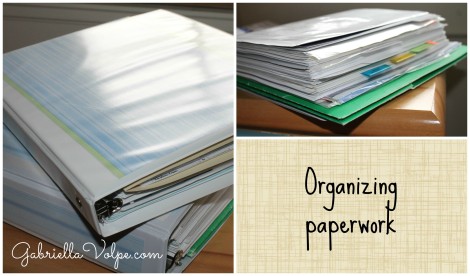
I keep my son’s medical and developmental records in one binder and all his legal and funding information in another. (Note: This is not his portfolio.)
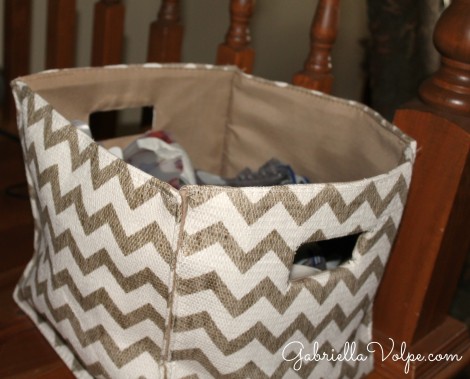
Because my son wears orthodics, we have a slew of shoes and shoe-like items to store. I keep an open-top basket for this purpose. Even though things are a jumbled mess on the inside, from the outside, things look organized and contained.

This basket with art materials is a closed-lid basket to store little items like glue sticks and markers, and playdough. Because of the nature of its contents, I keep this basket high on a piece of furniture.
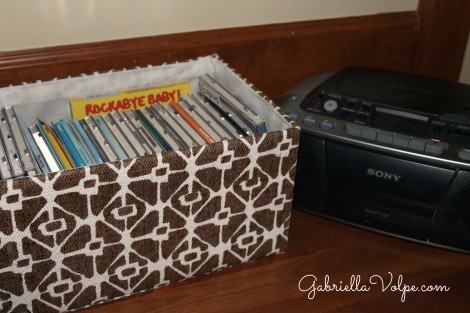
I also store my son’s CDs in a sturdy open-top basket right by the CD player.
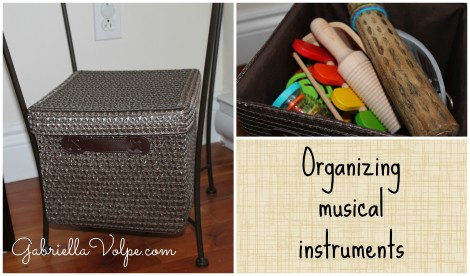
Similar to the art supplies, I keep a closed-lid basket for small musical instruments like rhythm sticks, tambourines and shakers. Because this one doesn’t contain unsafe items, I store it low. It’s actually on the bottom shelf of a plant stand.
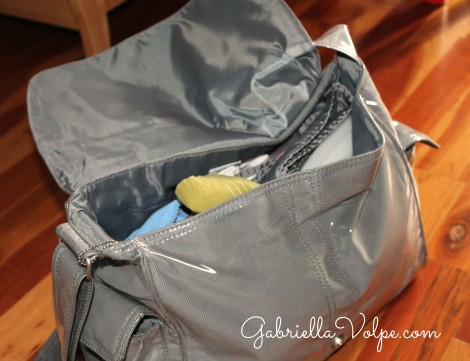
I still need to carry a diaper bag that I always keep ready. It contains essentials for changing, but also homeopathic remedies, feeding utensils, and some mini books. It’s important to have this organized as well!
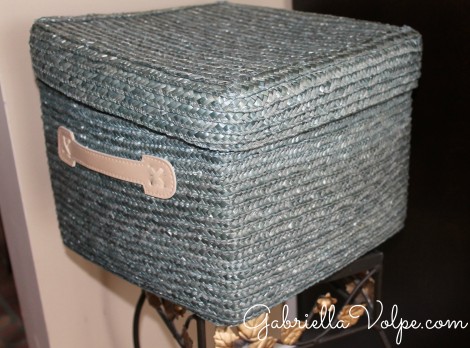
And … more baskets. I keep this blue one to store cleaning cloths for feeding time and a duplicate of this one for diapers and changing items. Notice how they are all similar, so it makes things coherent in the space, but still so functional.
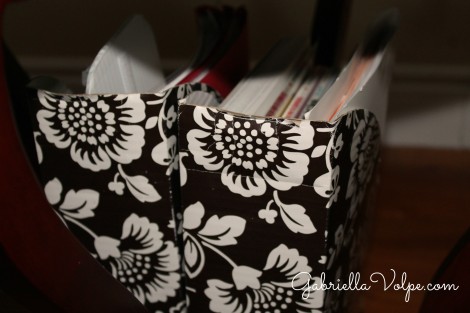
I keep my daily teaching material in pretty magazine holders underneath a side table in our living room.
- Keep it safe. Think about where you place items. Even if, according to a pinned image, candles look really good on the floor by the fireplace, it may not be ideal for a child’s quick hands. Since my son plays at the floor level, I make sure to store dangerous items at a height he cannot reach them.
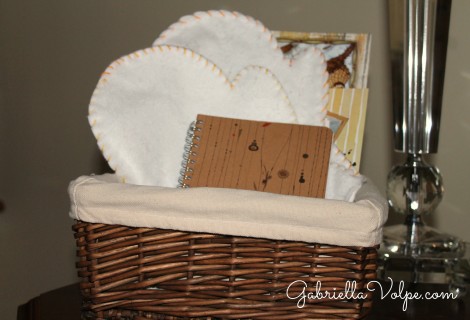
This basket sits on top of a side table in our living room. It stores precious thematic books and materials that I don’t want my son to get to without supervision.
- Cover large equipment. To make unsightly equipment (that is not in use) blend in, drape a silk scarf over them. This also keeps them dust-free.
Organized spaces make for a clearer mind for you and the child. Happy organizing!
What organizational tips can you share?

My son’s favourite activity is dumping containers. He would have a blast with all those baskets!
You are so right about that, Jasmin. My little guy will do that, too. This is why I keep the baskets I don’t mind him dumping at his level, and all others high on a shelf or on furniture. I keep books I want him to peruse in a basket on the floor, as well as the musical instruments (which he really doesn’t go to ever, for some reason). Everything else is for when mommy pulls them down for activities.